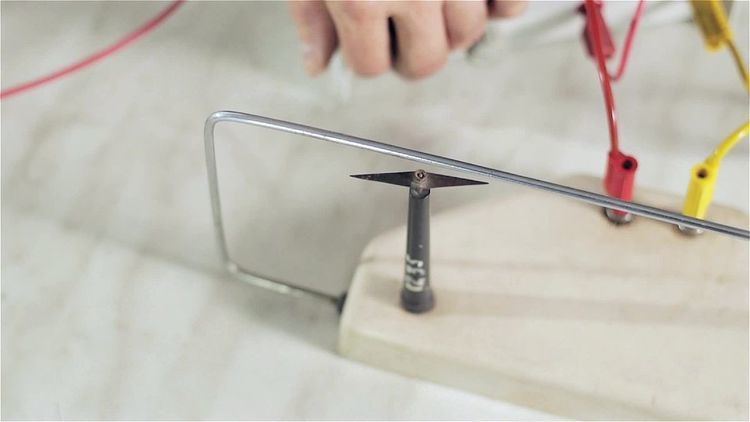 | ||
In physics and electrical engineering, Ørsted's law, or Oersted's law as it is often rendered in English, is the law that a steady electric current creates a magnetic field around it. This was discovered on April 21, 1820, by Danish physicist Hans Christian Ørsted (1777–1851), when he noticed that the needle of a compass next to a wire carrying current turned so that the needle was perpendicular to the wire. Ørsted investigated and found the mathematical law which governs how strong the field was, which is now called Ørsted's law. Ørsted's discovery was the first connection found between electricity and magnetism, and the first of two laws that link the two; the other is Faraday's law of induction. These two laws became part of the equations that govern electromagnetism, Maxwell's equations.
Contents
Ørsted's rules
Ørsted found that, for a straight wire carrying a steady (DC) current
Direction of the magnetic field
The direction of the magnetic field at a point, the direction of the arrowheads on the magnetic field lines, which is the direction that the "North pole" of the compass needle points, can be found from the current by the right hand rule. If the right hand is wrapped around the wire so the thumb points in the direction of the current (conventional current, flow of positive charge), the fingers will curl around the wire in the direction of the magnetic field.
Vector form of the law
The above rules can be generalized to give the modern vector form of Ørsted's law
The line integral of the magnetic field
where
where
Ørsted's law only holds for steady currents, which don't change with time. Therefore it only holds for DC electric circuits, with no capacitors or inductors. It can be seen that it fails for time varying currents by considering the case of a circuit consisting of a battery charging a capacitor through a resistor. It can be verified experimentally that the current in this circuit creates a magnetic field, yet any closed curve encircling the conductor can be spanned by a surface passing between the capacitor plates, through which no current passes, from which the equation would give zero magnetic field. Ørsted's law was modified by Maxwell to cover the case of time-varying currents by adding a new source term called displacement current, giving the Ampere-Maxwell equation.
